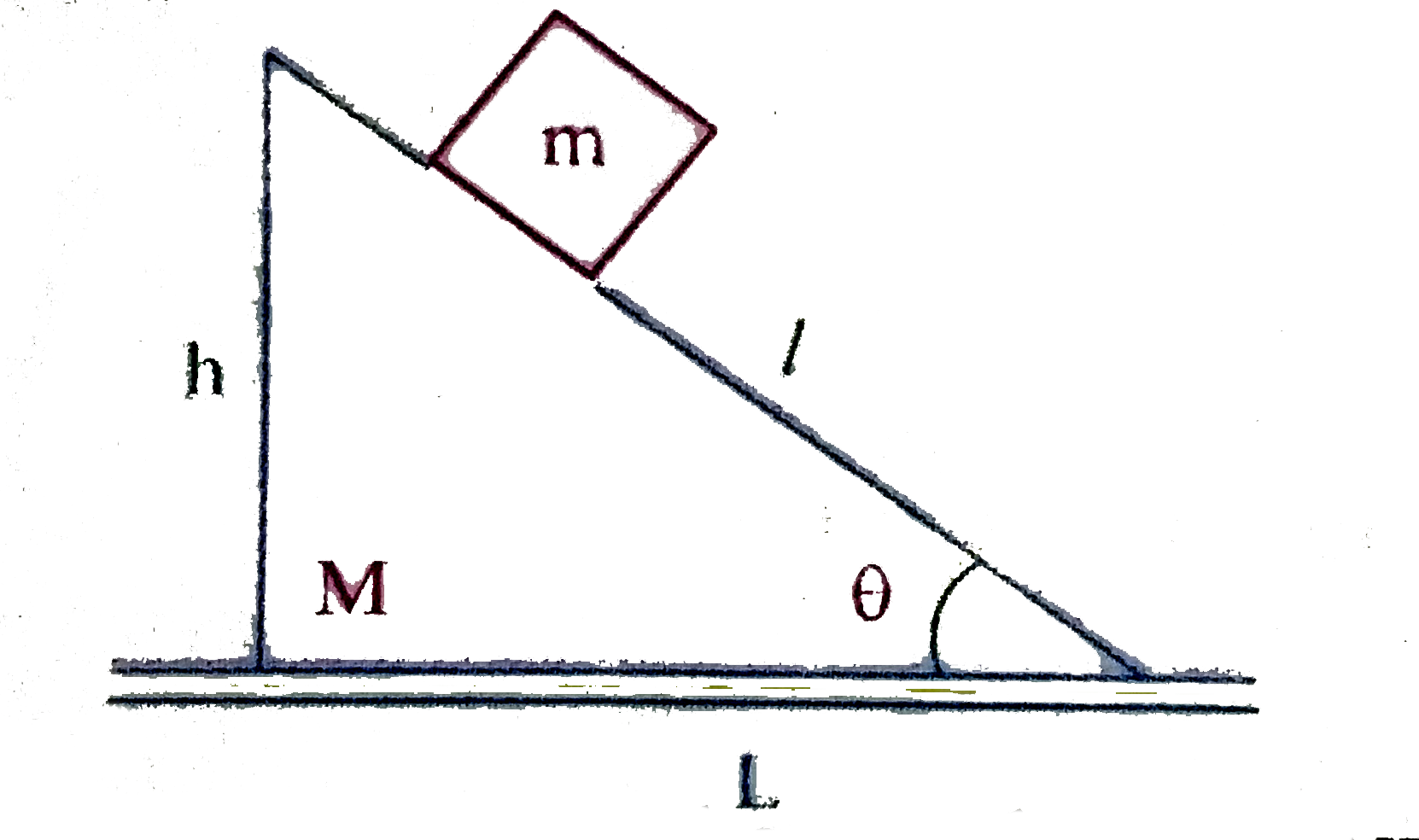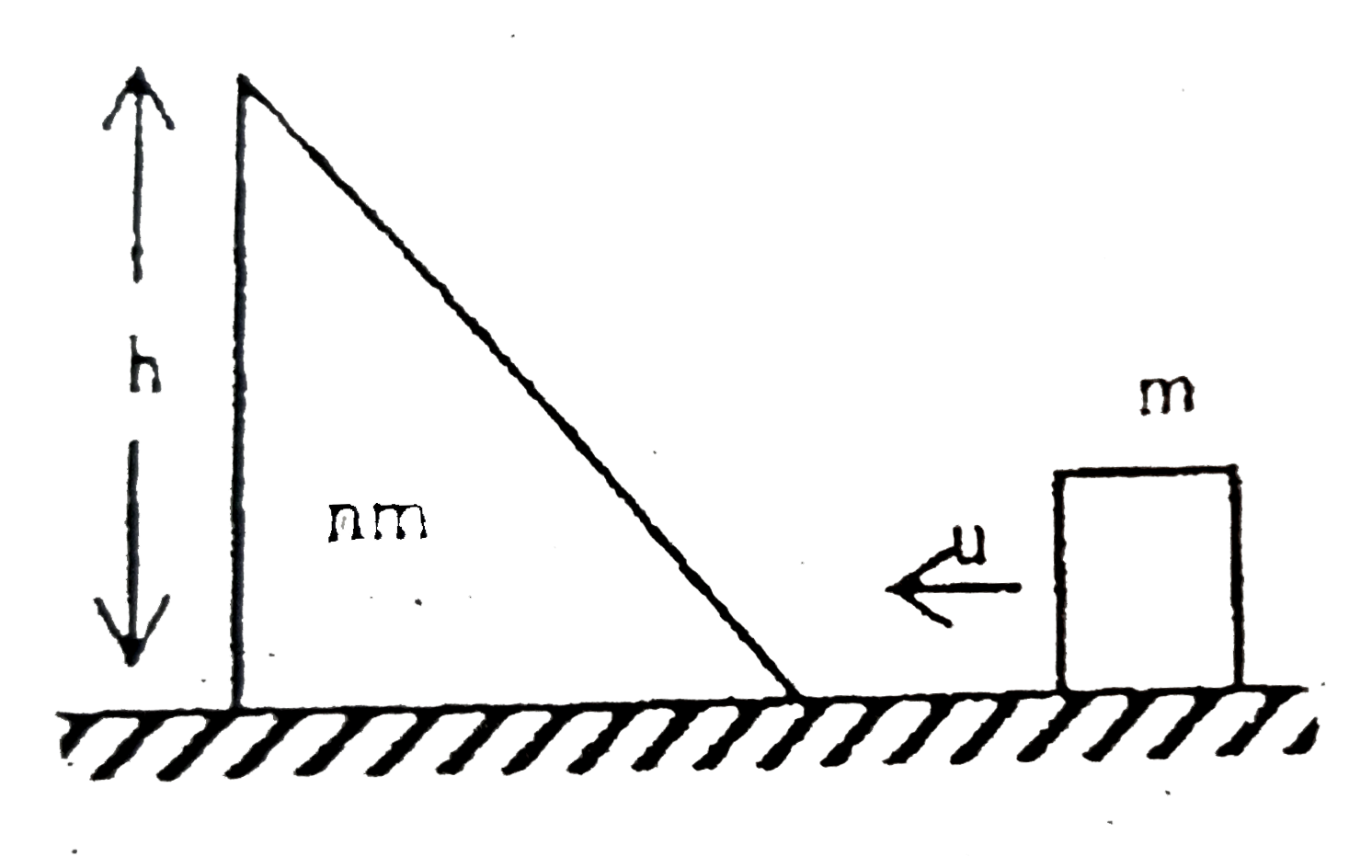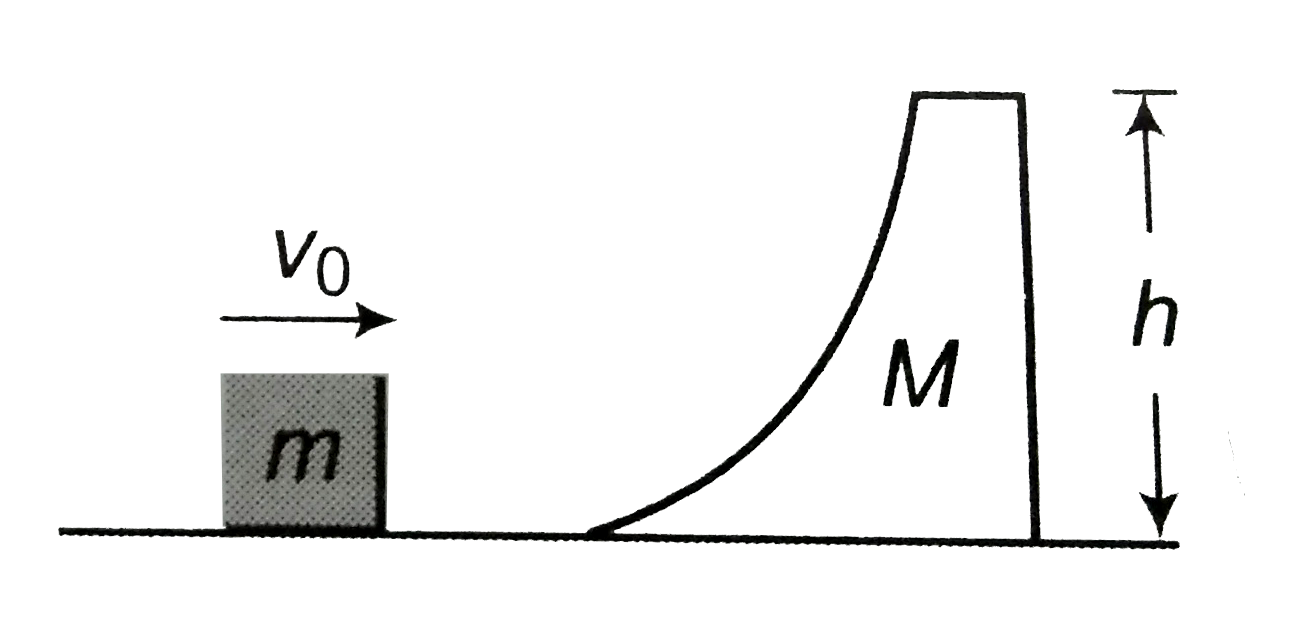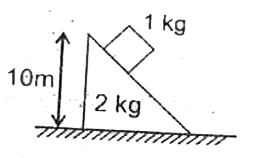A block of mass 1kg is pushed on a movable wedge of mass 2kg and height h=30cm with a velocity u=6m/sec. Before striking the wedge it travels 2m on a rough horizontal portion. Velocity is just sufficient for the block to reach the top of the wedge. Assuming all surfaces are smooth except the given horizontal part and collision of block and wedge is jerkless, the friction coefficition of the rough horizontal part is :

0.125
0.377
0.675
0.45
The correct Answer is:C
Apply work energy theorem
μmg(2)+mgh=KEi−KEf.....(1)
at the highest point
Vblock=Vwedge
velocity of the block after passing through the rough surface is v=√36−2μ(g)
so applying momentum conservation
1(v)=91+2)vf
⇒v1=v/3
⇒μ=0.675
Topper's Solved these Questions
- BOOK - RESONANCECHAPTER - DAILY PRACTICE PROBLEMSEXERCISE - dpp 477videos
DAILY PRACTICE PROBLEMS
- BOOK - RESONANCECHAPTER - DAILY PRACTICE PROBLEMSEXERCISE - dpp 484videos
DAILY PRACTICE PROBLEMS
- BOOK - RESONANCECHAPTER - DAILY PRACTICE PROBLEMSEXERCISE - DPP 457videos
DAILY PRACTICE PROBLEMS
- BOOK - RESONANCECHAPTER - CURRENT ELECTRICITYEXERCISE - Exercise54videos
CURRENT ELECTRICITY
- BOOK - RESONANCECHAPTER - ELASTICITY AND VISCOCITYEXERCISE - Advanced Level Problems9videos
ELASTICITY AND VISCOCITY
Similar Questions
A block of mass 1kg 'is pushed towards a movable wedge of mass 2kg and height h=30cm, with a velocity u=6ms. Before striking the wedge it travels 2m on a rough horizontal portion. The velocity is just sufficient for the block to reach the top of the wedge. Assuming all the surfaces are smooth except the given horizontal part and collision of block and wedge is jerkless, the friction coefficient of the rough horizontal part is (Round off the answer to two decimal places)
'(##CEN_KSR_PHY_JEE_C08_E01_015_Q09##)'View SolutionAll surfaces are smooth Find the horizontal displacements of the block and the wedge when the block slides down from top to bottom
 .View Solution
.View Solution
Knowledge Check
- Question 1 - Select One
A block of mass 1kg is pushed on a movable wedge of mass 2kg and height h=30cm with a velocity u=6m/sec. Before striking the wedge it travels 2m on a rough horizontal portion. Velocity is just sufficient for the block to reach the top of the wedge. Assuming all surface are smooth except the given horizontal part and collision of block and wedge is jerkless, the friction coefficient of the rough horizontal part is :
An observer having a gun observes a remotely controlled balloon. When he first noticed the balloon, it was at an altitude of 800m and moving vertically upward at a constant velocity of 5m/s. The horizontal displacement of balloon from the observer is 1600m. Shells fired from the gun have an initial velocity of 400m/s at a fixed angle θ(sinθ=3/5and cosθ=4/5). The observer having gun waits ( for some time after observing the balloon) and fires so as to destroy the balloon. Assume g=10m/s2. Neglect air resistance.
 A0.125B0.377C0.675D0.45
A0.125B0.377C0.675D0.45 - Question 2 - Select One
A block of mass m is pushed towards a movable wedge of mass nm and height h, with a velocity u. All surfaces are smooth. The minimum value of u for which the block will reach the top of the wedge is
 A√2ghBn2ghC√2gh(1+1n)D√2gh(1−1n)
A√2ghBn2ghC√2gh(1+1n)D√2gh(1−1n) - Question 3 - Select One
A block of mass m is pushed towards a movable wedge of mass nm and height h, with a velocity u. All surfaces are smooth. The minimum value of u for which the block will reach the top of the wedge is
 A√2ghB2nghC√2gh(1+1n)D√2gh(1−1n)
A√2ghB2nghC√2gh(1+1n)D√2gh(1−1n)
A block of mass m is released from a wedge of mass m as shown in figure . Find the time taken by the block to reach the end of the wedge.
 View Solution
View SolutionA small block of mass m is pushed towards a movable wedge of mass ηm and height h with initial velocity u.All surface are smooth. The minimum value of u for which the block will reach the top of the wedge:
 View Solution
View SolutionA small block of mass m is pushed towards a movable wedge of mass ηm and height h with initial velocity u.All surface are smooth. The minimum value of u for which the block will reach the top of the wedge:
 View Solution
View SolutionA block of mass m is pushed towards the movable wedge of mass M and height h, with a velocity v0. All surfaces are smooth . The minimum value of v0 for which the block will reach the top of the wedge is
 View Solution
View SolutionA block of mass 1 kg is released from the top of a wedge of mass 2 kg. Height of wedge is 10 meter and all the surfaces are frictionless. Then
 View Solution
View Solution

